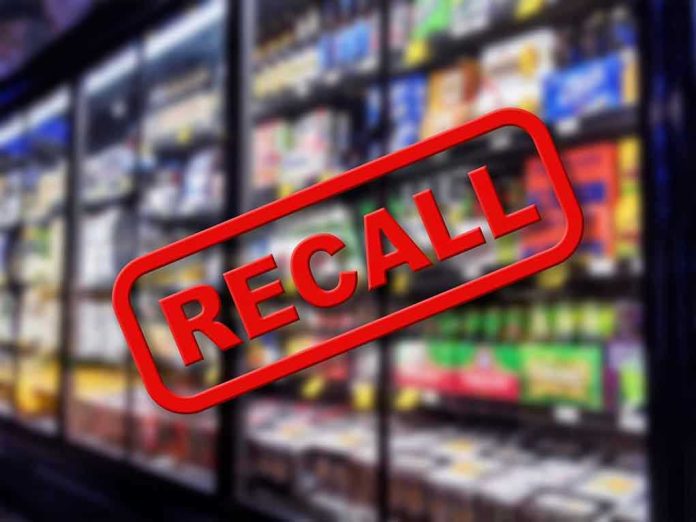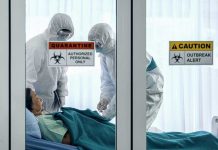
Hospitals and nursing homes are racing to pull “antimicrobial” hand soaps after an FDA-posted recall warned contamination could trigger life‑threatening sepsis in vulnerable patients.
Story Snapshot
- FDA posted a nationwide voluntary recall of multiple DermaRite hand soaps over contamination with Burkholderia cepacia complex.
- Immunocompromised patients face the highest risk, though no adverse events have been reported to date.
- Affected brands—DermaKleen, DermaSarra, KleenFoam, Perigiene—are common in hospitals and long‑term care settings.
- Facilities are urged to quarantine, destroy impacted lots, and purge/clean dispensers before replacement.
What the FDA Recall Says and Why It Matters
On August 7, the FDA posted DermaRite’s voluntary nationwide recall covering specific lots of antiseptic lotion soaps and antimicrobial foam soaps due to contamination with Burkholderia cepacia complex, a pathogen capable of causing serious infections and sepsis in immunocompromised users. The notice directs distributors and customers to examine inventory and destroy affected product. Media summaries echoed the sepsis risk and emphasized that no adverse events have been reported. The recall remains active, with lot-level details on the FDA page.
DermaRite’s brands—DermaKleen, DermaSarra, KleenFoam, and Perigiene—are routinely stocked in hospitals, nursing homes, and other care settings where frail patients are present. Bulk refills and centralized dispensers can rapidly spread contaminated product across units if lots are not identified and removed quickly. Facilities that used these products should execute a clean break: quarantine and destroy affected lots, purge and clean dispensers, substitute safe alternatives, and alert infection prevention teams to monitor at‑risk patients.
How This Fits a Broader Pattern of Product Safety Gaps
Regulators have long warned that consumer “antibacterial” washes offer no proven benefit over plain soap and water, a position anchored in the FDA’s 2016 action removing many antibacterial agents like triclosan from consumer washes. Post‑2020 oversight intensified after waves of sanitizer recalls—first for toxic methanol, then for microbial contamination in alcohol‑free products—revealing recurring manufacturing control failures. The current DermaRite action underscores that “antimicrobial” on a label cannot compensate for poor quality systems in water‑based products.
Burkholderia cepacia complex has a history of contaminating aqueous personal‑care and medical products due to its ability to survive in water, form biofilms, and resist many preservatives. When introduced into healthcare soap systems, contaminated solutions can seed dispensers and plumbing, complicating remediation. For oncology, transplant, and long‑term care units, this raises immediate infection‑control concerns and necessitates rapid substitution, targeted cleaning protocols, and lot traceability checks by supply chain leaders and infection preventionists.
Immediate Actions for Healthcare Facilities
Hospitals and nursing homes should verify whether any recalled DermaRite SKUs or lots were purchased or installed, remove them from service, and follow destruction instructions. Teams should purge and sanitize dispensers before refilling with unaffected product, document actions for quality assurance, and communicate changes to staff on high‑risk floors. Leaders should also review supplier qualifications, require environmental monitoring data for aqueous antiseptics, and ensure alternatives are sourced from manufacturers with robust controls.
Facilities should cross‑check the FDA’s ongoing “hand sanitizers consumers should not use” list when sourcing substitutes to avoid trading one safety problem for another. Given prior recalls tied to methanol and microbial contamination, procurement should favor closed‑cartridge systems that reduce contamination risks from bulk refills. Where practical, reinforce that plain soap and water—properly manufactured and dispensed—remain a reliable standard, aligning with the FDA’s view that added antibacterial agents often do not improve outcomes.
What To Watch Out For
Patients and taxpayers deserve reliable, safe products—not buzzwords or bureaucratic runaround. The FDA notice provides the authoritative lot details and clear risk statements, while media alerts help frontline facilities respond quickly. No injuries have been reported, but absence of reports does not prove absence of harm; immunocompromised patients warrant careful monitoring. Expect increased scrutiny of manufacturers’ environmental controls, potential requalification of suppliers, and a shift away from bulk refill systems toward safer, traceable cartridges in clinical settings.
If your loved one is in a hospital or nursing home, ask which hand soaps are in use, whether dispensers were purged and replaced, and how the facility verified lot numbers against the recall. For providers, the path forward is straightforward: move fast, document thoroughly, and prioritize proven hygiene fundamentals over marketing claims. Integrity in manufacturing and transparent recall execution—not slogans—protects patients and preserves trust.
Sources:
Hand soap recall: Products over contamination that may cause life-threatening sepsis
FDA Issues New Ruling on Antibacterial Soaps
FDA Updates on Hand Sanitizers Consumers Should Not Use













